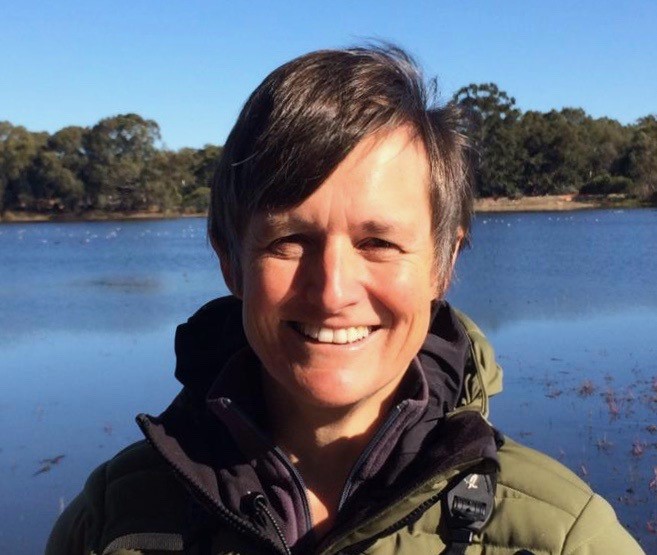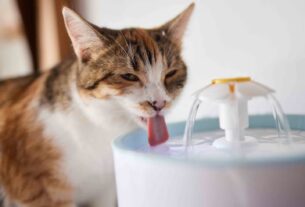
Face to Face: Wild, wild life: from volunteer to visionary
Anne Layton-Bennett talks to Greg Irons, director of Bonorong Wildlife Sanctuary.
Greg Irons is one of those fortunate people who always knew what he wanted to do when he grew up, and that it would involve animals in some way, shape or form. Animals fascinated him, and while his parents did not always share the same enthusiasm for all his childhood pets, they fully supported his interest, and tolerated his early efforts at rehabilitating the injured wildlife he brought home. Those efforts have involved converting a bathroom into a wombat enclosure in the Taroona family home, allowing little Tasmanian devils to run around the lounge room, and building aviaries to house native birds.
“My dad’s not so keen, but my mum loves animals – I reckon she’s a wildlife carer trapped in a teacher’s body – but I’d go to my neighbour’s place after school and feed their guinea fowl, and help with their cats, chickens and pet goats. Just being around animals fascinated me, and having any weird and wonderful animal as a pet was awesome.”
As Irons grew up and started taking the rehabilitation of animals more seriously, his interest changed from collecting pet wildlife to one where he gained far more enjoyment from caring for wildlife, and seeing them released back into the wild, although he admits to feeling devastated after he released the first of his “coolest pets ever”.
Irons was just 19 when he first went to work as a volunteer at Bonorong, in the Hobart suburb of Brighton, which at the time was a traditional wildlife park. He offered to work fulltime for a week for no pay, telling the owners he would work harder than anyone they had ever employed if they gave him a chance. The high-stakes tactic worked. When the week was over he was offered a job, and two years later he was appointed head keeper, and when the opportunity to buy Bonorong followed soon afterwards Irons grabbed it, becoming a wildlife park owner at just 25 years of age. As director, he wasted no time in starting to realise his vision, which was to create a sanctuary for wildlife unable to survive in the wild; a wildlife rescue service; and a wildlife-only clinic and hospital. And that was just for starters.
“The rescue service really was the big one. There hadn’t been one in Tasmania before and it clearly needed more than two or three people. As it turned out there was a huge number of people keen to get involved and help as rescuers, so we designed a simple coordinated communication system that was relatively cheap and involved everyone using text messages.”
The service now extends state-wide but with fewer rescuers in the north, and fewer vets there with the resources to assist at all hours of the day and night, the majority of rescued wildlife are in southern Tasmania. However the model his team designed has proved so successful it has subsequently been shared with several other animal rescue services, including some state-based RSPCAs who have adapted it for their adoption programs.
Bonorong’s rescue service operates quite separately from the wildlife carer service run by the state government, but while they operate independently they work closely together. Irons likens Bonorong’s role to an ambulance service that is first on the scene, with the skills to assess whether or not the animals – often joeys – are likely to survive, and the resources to ensure they receive the most appropriate veterinary care and attention. Depending on the extent of their injuries animals are then placed with the wildlife carer service, whose members rehabilitate the animals in their homes until they are ready to be released.
The next box to be ticked on Irons’ Bonorong wishlist was establishing the veterinary clinic – although he is not resting on his laurels since his current goal is to establish two more, in the state’s north.
“That’s certainly one of my long term goals, so there’s veterinary attention available across the state, but they’re very expensive to run, and people don’t pay to use them, and the animals don’t come in with credit cards unfortunately.
“We can’t afford to open the Bonorong clinic seven days a week yet, although we’re plugging away at that. We’ve opened it to the public now on Mondays and Fridays, which can make things a little fraught when treatments might include anything from an injured penguin to a tiger snake needing an operation.”
Opening hours are not the only problem. Irons soon discovered finding vets with expertise in treating wildlife was a serious issue, with vet courses devoting very little time to learning about wildlife. He believes much more time and effort should be put into training wildlife specialists to help the conservation of Australia’s unique species.
“Unlike cats and dogs you can’t always see wildlife injuries. Wildlife will try and hide them, and often it’s a blood test, or another test that picks up the problem. We had a potoroo once who’d taken rat bait, but from the way it was carrying on you’d think he had a head injury – and he was on the road when we found him. It took hours of testing and checking slides under microscopes to diagnose the problem correctly, which other vets simply don’t have the time to do even if they have wildlife expertise.”
While education is now something of a passion for Irons when it relates to raising public awareness of Tasmania’s wildlife, and how lucky Tasmanians are to have so many species in their state that are found nowhere else in the world, he freely admits he was far from being a star student himself.
“My parents always laugh when I say how important education is after they watched me through school. It wasn’t an environment that worked for me. Hands-on learning and getting out there and doing it was much more effective, so for me now the basis of all conservation is education, because people need to understand something before they can care about it and try to instigate change.”
A significant aspect of his commitment to wildlife education is the TAFE Animal Studies course Bonorong is involved in teaching. A fulltime teacher is based at the sanctuary, which is the classroom for approximately 80 students. The more hands-on approach has resulted in two-thirds of students finding employment within the animal industry within six months of finishing the course.
As well as gaining practical experience students are also able to watch procedures conducted at the vet clinic, which is sound-proofed and has one way glass, giving them invaluable knowledge and insight that is generally unavailable to students studying elsewhere, and puts them ahead when it comes to employment opportunities.
“We don’t just talk about how we revamp an enclosure, we get out there and revamp that enclosure, so our students get a lot of really hands-on experience. Our students are now employed at RSPCA vet clinics, dog and cat homes, and at a number of zoos across Australia, New Zealand and even Scotland. Animal husbandry is very similar, so while the wildlife opportunities aren’t massive in terms of wildlife parks, wildlife are held in zoos. But it’s placing our students in vet clinics that has proved so important.
“One vet never used to see birds due to either a dislike, or a mild phobia, when it came to birds flapping about the surgery. Now that vet is happy to see birds so long as the student is responsible for holding them because he knows how to do that.”
Irons says the biggest challenge for Tasmania now is the cultural shift that is essential if Tasmanians are ever to appreciate how special their wildlife is, and recognise how lucky they are to have it in such relative abundance. Until people are able to identify and know more about the animals in their own backyard Irons believes they will not begin to care about it. In addition to regularly giving talks at schools, and encouraging school visits to the sanctuary, he is also trying to instigate this cultural shift through a campaign that highlights the roadkill issue, and reminds people to slow down when driving between dusk and dawn.
“We can put up a million road signs that say drive slower but the fact remains our number one reminder, our best road sign ever, is roadkill. When you see roadkill it means animals are about.
“We have species here that are found nowhere else in the world, or that were on the mainland and are now extinct there. There are plenty of them, but most Tasmanians have never heard of them. Every schoolkid knows what a lion, tiger or dinosaur is but they don’t have a clue what a bettong is, or a bandicoot, or all those other animals that are on our doorstep.”
With a number of ideas and programs still on the drawing board Irons has no plans to slow down just yet, although he hopes to one day to have others able to shoulder some of the responsibilities so he can go back to just being a wildlife keeper again.
“Long-term I want a much bigger rescue service, as well as people coordinating the service, and a 24-hour clinic for the north and north-east. But as to when these things might happen, I couldn’t honestly tell you!”
Since he took over as director of Bonorong Irons’ enthusiasm, passion and dedication to wildlife has earned him several awards. These include the 2011 Southern Cross Tasmanian Young Achiever Award; and The Tourism Minister’s Young Achiever Award in 2016’s Tasmanian Tourism Awards. He was named Young Tasmanian of the Year in 2012.
Anne Layton-Bennett



